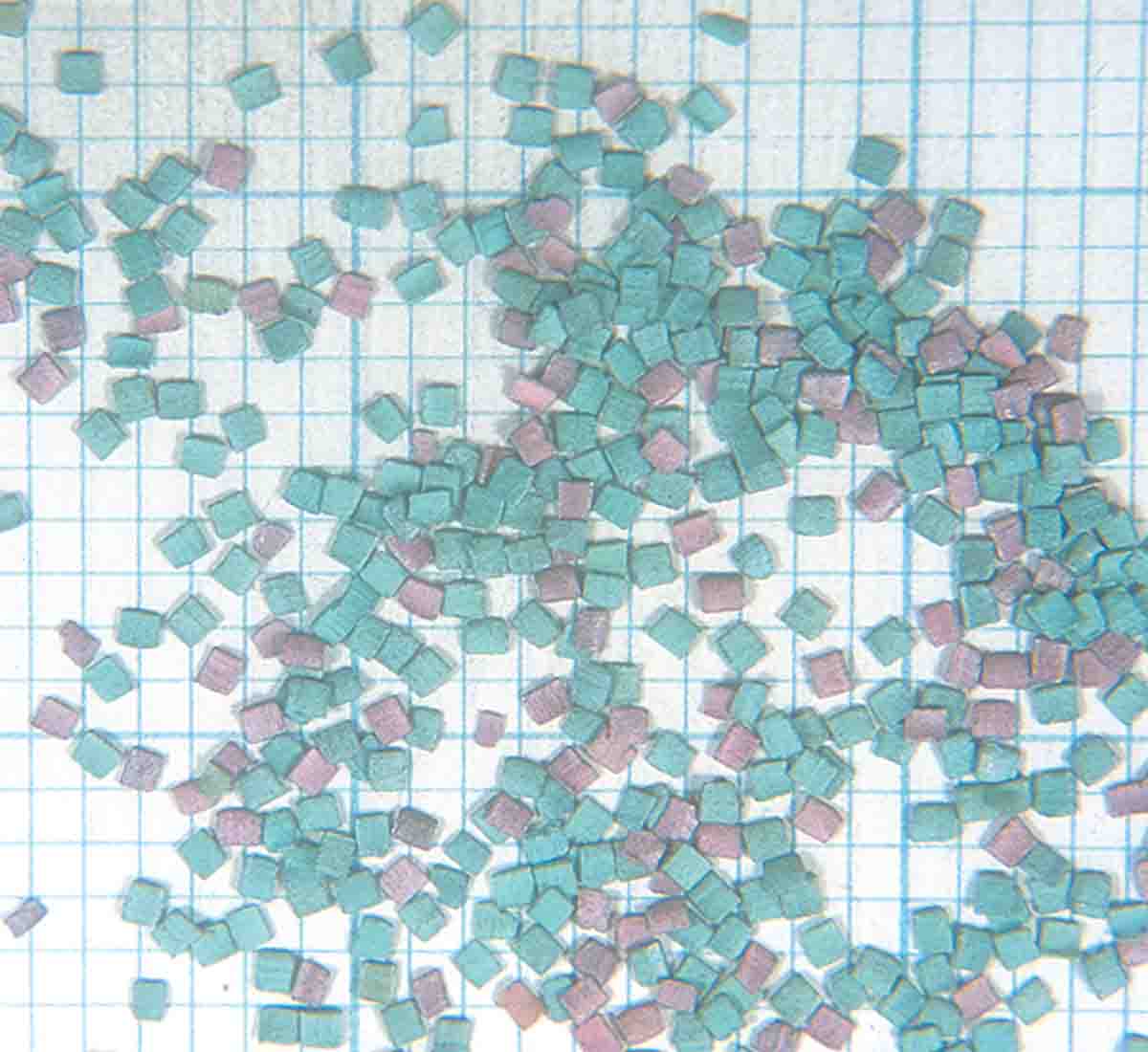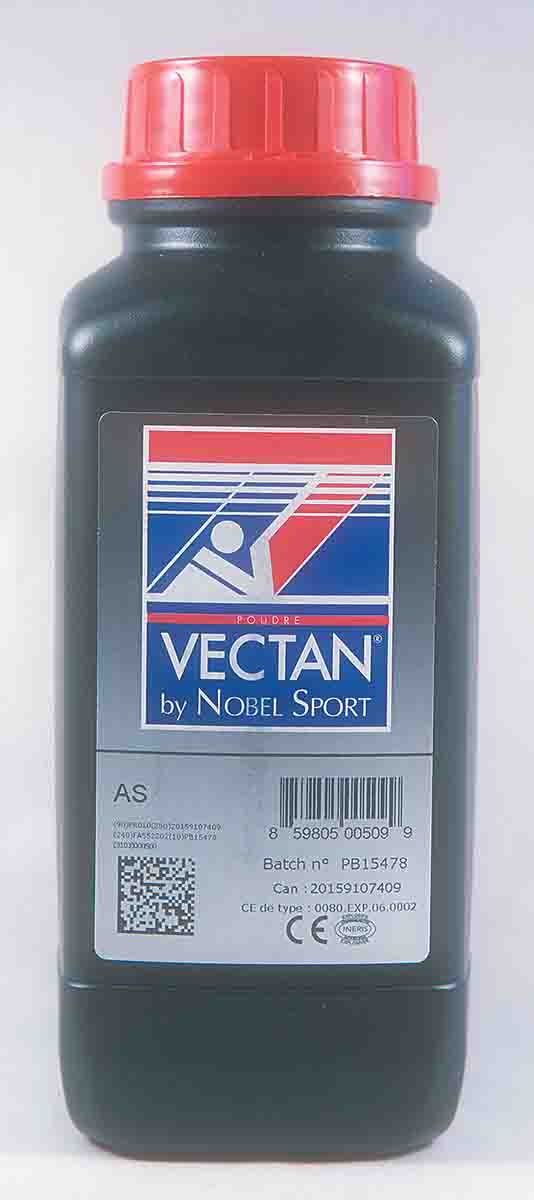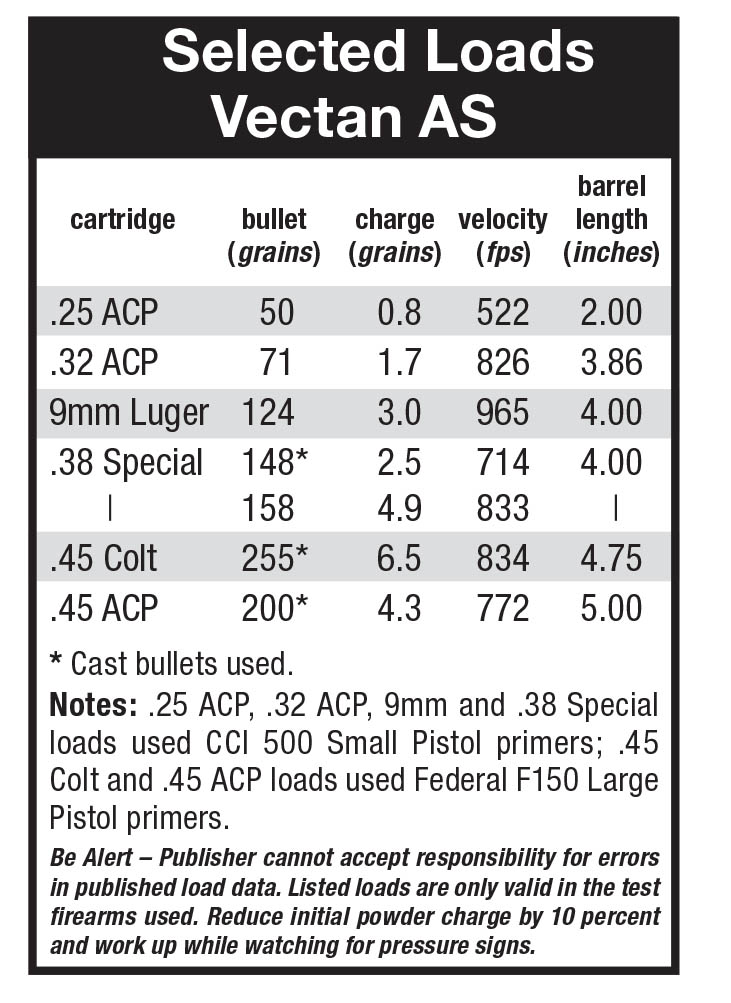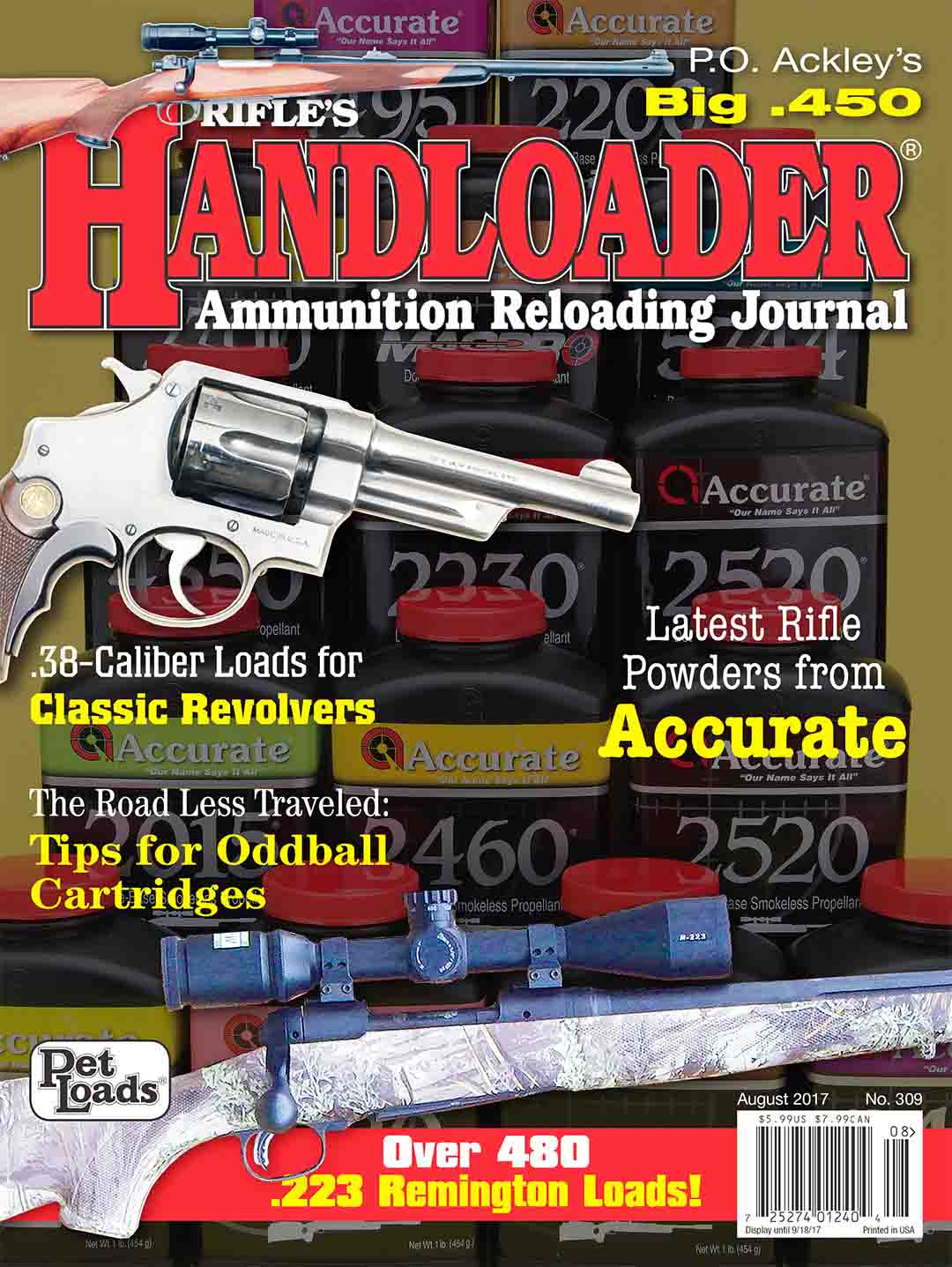Propellant Profiles
Vectan AS
column By: R.H. VanDenburg, Jr. |
Vectan powders from France have been available for years in the U.S., but we’ve refrained from reviewing them owing their general lack of availability. That is changing, however, and it seems worthwhile to introduce these powders to Handloader readers. The Vectan importer is Graf & Sons of Mexico, Missouri, but recently other mail-order firms such as Ballistic Products, Inc. of Corcoran, Minnesota, have begun to carry the line of powders. Any retailer can, of course, obtain Vectan powders and stock the line if interest warrants.

Vectan is part of the French conglomerate SNPE and is headquartered in Paris. It includes Nobel Sport, a manufacturer of shotshells, wads and other components for reloading, and an Italian firm, Martignoni, a major primer manufacturer under its own label and supplier to Nobel Sport. The Nobel Sport shotshells I have on hand are manufactured in Italy with Nobel Sport hulls and wads, Martignoni primers and Vectan pow-
ders. Vectan reloading powders are labeled “Vectan by Nobel Sport,” followed by the powder name. Graf & Sons is importing 18 powders, apparently, although Nobel Sport data lists 19. Of the 18, 9 are intended for use in shotshells only, or shotshells and handguns; 5 are listed as “metallic” and are considered handgun powders, although the slowest may find use in certain small-capacity rifle cartridges such as the .22 Hornet; the remaining 4 are for use in rifle cartridges.
Interestingly, Vectan powders are single-base, meaning no nitro-glycerin is used in their composition. This is relatively rare for shotshell or handgun/shotshell powders in the U.S. but is popular in Europe. IMR’s PB, SR-4756 and SR-7625 were single-base powders for shotshell and handgun use but have been recently discontinued. Western Powders’ Accurate line contains SOLO 1000 and SOLO 1250, which are single base, and Alliant’s American Select is not made with nitroglycerin, but as it is manufactured in the same product line as the company’s “Dot” series of double-base powders, it picks up some nitroglycerin in the process and is often represented as a double- base powder having a one to 2 percent nitroglycerin content.

Vectan AS is identified in Vectan’s literature as a handgun powder but also suitable for some target applications in 7⁄8- and 1-ounce, 12-gauge loads and 7⁄8-ounce, 16-gauge loads. Its metallic cartridge range is from the .25 ACP to the .45 ACP and .45 Colt. It is a flake powder, meaning in wet form it is placed on a plate to dry and then cut into rectangular “flakes.” This manufacturing method is not seen in the U.S. but is quite popular in Europe. Dimensionally, AS’s flake size is about .068 inch by .076 inch and .015 inch thick, as close as I can measure them. The color is generally a medium green with some of the flakes a dull pink. Both suggest a minimum use of graphite in their makeup. Bulk density is listed as 480 Kg/M3 or .480 g/cc. This is rather case-filling, but the powder meters reasonably well. Burning rate, according to the Vectan reloading booklet, published in March 2016, is presented as similar to Accurate No. 2, Alliant’s American
Select and Hodgdon’s Titegroup. This would place it between Red Dot and Green Dot for most applications.
I began testing with the .25 ACP. Published AS data was limited to a 51-grain bullet. I substituted the only jacketed bullet on hand that was close, a Winchester 50-grain FMJ. Shooters typically don’t expect much from this cartridge, especially from a 2-inch barrel and rudimentary sights, but functioning was flawless. Accuracy was typical and velocity, recorded at 10 feet from the muzzle, was just a tick under that published.
Next was the .32 ACP, a cartridge I enjoy shooting in a Walther PP. Data was listed for 67- and 77-grain bullets; my only option was a Remington 71-grain FMJ, so I split the difference on the powder charge and got just a bit under the projected speed. Again, functioning was flawless, and accuracy was good thanks to better sights.
For the 9mm Luger, Vectan paired AS with two 125-grain bullets. I selected the pairing with bullets from Lyman mould 356402 and once again recorded a velocity just under published data. A pattern was emerging, I think, more owing to the differences in laboratory and factory barrels and their lengths and the actual distance at which muzzle velocities were recorded.

With the .38 Special revolver cartridge, two bullets were considered. First was a 148-grain wadcutter, a favorite for practicing, and a 158-grain jacketed bullet. The former provided excellent accuracy and mild recoil; the latter was a more acceptable defense load with tight groups and small extreme spreads. When it came to the .45 Colt cartridge, selected were bullets weighing about 255 grains from my Lyman 454190 mould. This was also a good performer with decent groups and small extreme spreads.
A final effort was with the .45 ACP. A 200-grain cast SWC target bullet produced nice groups, but the drop off in velocity versus published data was more pronounced – about 40 fps against 20 fps for the other cartridges. I have no explanation, as test barrel lengths are not disclosed by Vectan. In the powder’s defense, the extreme spreads and standard deviations with this cartridge were the smallest of the tests, and ejected cases could have been captured in a teacup. Well, most of them.
This first exposure to Vectan powders has been rewarding. Keep in mind they are packaged in .500-kilogram containers; that’s 1.1 pounds compared to our traditional 1-pound packaging and are competitively priced.


